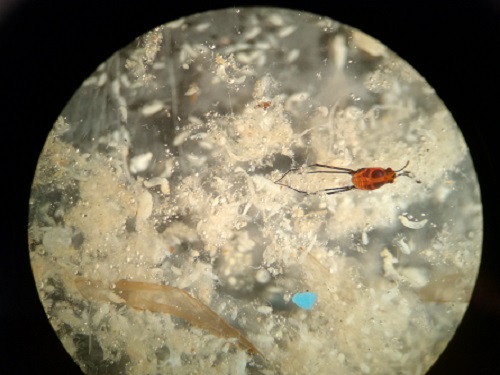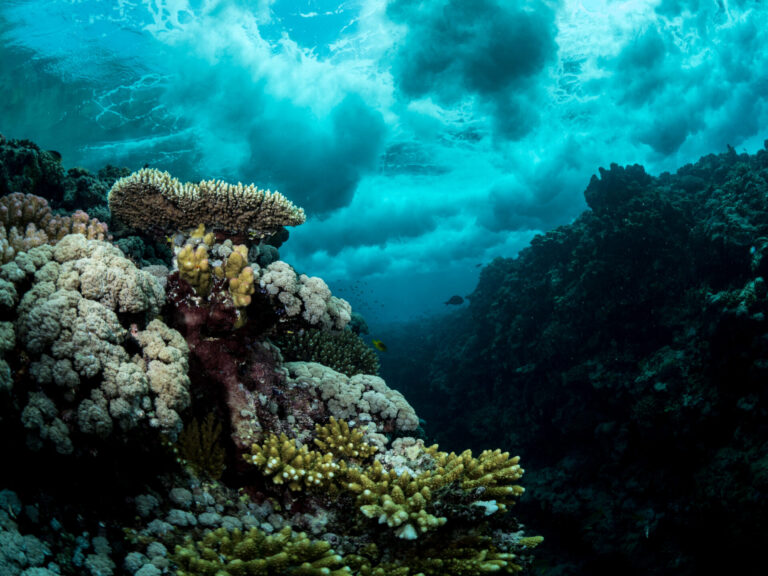Marine Science
Trawl of Red Sea surface waters finds little plastic
The Red Sea has relatively low amounts of floating plastic debris in its surface waters due to fewer sources or faster removal.


A raw sample before sorting, showing one piece of blue plastic.
© 2017 Cecilia Martin

Samples were carefully sorted into size and type of plastics.
© 2017 Cecilia Martin
Researchers are mapping global patterns of marine plastic pollution as alarm grows over floating rubbish. A team led by marine scientist Carlos Duarte from KAUST shows that the level of plastic debris in the Red Sea is relatively low.
Samples of floating plastic rubbish were collected by the team from 120 sites along 1500km of shoreline on the eastern margin of the Red Sea during voyages in 2016-2017. The debris was captured in plankton nets dragged slowly just below the sea surface and the fragments were then painstakingly sorted into material type and size.
Three-quarters of the collected rubbish was rigid fragments of broken objects. Plastic film, such as bags or wrapping, made up 17 percent, but there were only small amounts of fishing lines or nets (6 percent) and foam (4 percent).
The relatively low levels of floating plastic in the Red Sea may either be due to there being fewer sources of rubbish or its faster removal, explains doctoral student, Cecilia Martin. Not much plastic comes from the land because this coastline has few of the usual polluting contributors.
“Usually the main source of plastic in the sea tends to be litter and mismanaged waste,” says Martin. “But on this coastline, the only large human settlement is Jeddah, with a population of 2.8 million people, and little tourism, so there are few people with the opportunity to litter.” Similarly, rivers globally provide 10-50 percent of discarded oceanic plastic, but because the Red Sea catchment has no permanent rivers, their contribution is negligible.
“Instead, the winds and a few storms are most probably the main sources of plastic,” says Martin. “This is reflected in our findings of proportionally higher amounts of plastic films compared to global trends.”
There is a concern, however, says Martin, about the “missing” plastic. The low levels of debris can be partially attributed to its “‘removal” by the extensive mangrove and coral reef systems of the area. Capture of plastics is problematic for these ecosystems.
“Mangroves are perfect traps for macrolitter,” says Martin. “At high tide, floating items reach the forest and then, as the tide drops, get stuck in seedlings and mangrove aerial roots (pneumatophores) which act as a mesh to trap them.”
Coral ecosystems can also consume plastic. “The small size of microplastic items makes it available to a wide range of organisms and many marine groups, such as corals, mollusks, crabs and plankton are found to ingest plastic.”
Duarte says the problem of plastic pollution in the ocean reflects our consumer habits and the solution is to reduce plastic use in our daily lives.
References
-
Martí, E., Martin, C., Cózar, A., & Duarte, C. M. Low abundance of plastic fragments in the surface waters of the Red Sea. Frontiers in Marine Science 4, 333 (2017).| article
You might also like

Marine Science
A place to trial hope for global reef restoration

Marine Science
Reef-building coral shows signs of enhanced heat tolerance

Marine Science
Plastic-munching bacteria found across the seven seas

Marine Science
AI reveals the universal beauty of coral reef growth

Marine Science
Tiny crabs glow to stay hidden

Marine Science
Mass fish deaths linked to extreme marine heatwave in Red Sea

Marine Science
Weeding out the secrets of Red Sea macroalgae

Bioscience




